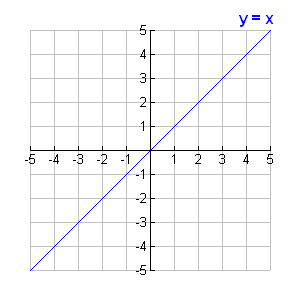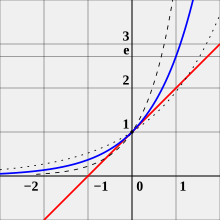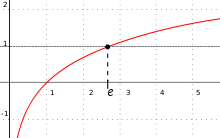Most
Introductions to Fourier Series, Fourier Transform, Fourier Analysis
are not written for common ordinary people. Some or a lot of
'high-level' (by common ordinary people standard) mathematical
background knowledge is required to understand them. One of the hard
parts at the introduction stage is Fourier coefficients. In
most Introductions I have tried Fourier coefficients are
given without derivation, reasoning or proof, just given. Plus
Fourier coefficients do not look like ordinary (simple)
coefficients. They are very long and these are functions as well.
And Fourier Coefficients are different from Fourier
Series, of course. Fourier Coefficients are in integral
form while Fourier Series is in series form. Your
understanding of Fourier Transform, Laplace Transform (if you try)
will be widen and deepened because these are developments of Fourier
Series.
Wiki's Fourier Series (as of
05-Aug-2011) says in Definition:
"
Fourier's
formula for 2π-periodic functions using sines
and cosines
For a periodic function ƒ(x)
that is integrable on [−π, π], the numbers
and
are called the Fourier coefficients of ƒ. One introduces the partial sums of the Fourier series for ƒ, often denoted by
The partial sums for ƒ are trigonometric polynomials. One expects that the functions SN ƒ approximate the function ƒ, and that the approximation improves as N tends to infinity. The infinite sum
is called the
Fourier series of ƒ.
"
This
part is not found any more now in Wiki. Probably those who already
know Fourier Series can understand this but those who are new to
Fourier Series do not understand this. The point is < ƒ(x) is a periodic function>. Or
in one word "periodicity". This is crucial and please do
not forget this. The above explanation is very general or too
general for those who do not know Fourier Series but want to know
it.
While most Introductions are like
this:
Fourier series of ƒ(x) =
and the coefficients are given as
and
Fourier
coefficients are not so simple and may have several meanings
including very profound ones depending on how how deep you see and
understand them. So Fourier coefficients must be explained in
some way, not just given. (Again
ƒ(x) must be a periodic function.)
First -
what is periodic function ? (we will see this later.)
Second
- What is a coefficient? Coefficient is one of the basic math
backgrounds.
From <All about Circuits>
"
<https://www.allaboutcircuits.com/technical-articles/the-fourier-coefficients/>
Learn
About Fourier Coefficients
January 05, 2016 by Donald Krambeck
Never
understood Fourier series coefficients? Now you will.
It
says
"
f(t)=av+∞∑n=
ancos(nω0t)+bnsin(nω0t) (1.1) Fourier
series representation of a periodic function
Where n is the integer sequence 1,2,3,...
In Eq. 1.1,
av, an, and bn are known as Fourier
coefficients and can be found from f(t).
The term ω0 (or 2πT) represents the fundamental
frequency of the periodic function f(t).
The
integral multiples of ω0, i.e. 2ω0,3ω0,4ω0 and so on, are
known as the harmonic frequencies of f(t).
Thus nω0 is the nth harmonic term of f(t).
"
Underline
made by ACT.
So the Fourier coefficients can be said inter-related with the original periodic function f(t).
<x>
is general while <t> usually stands for time. But sometimes,
especially for generalized <x> may be better to use, not
necessarily time. But at the introduction stage generalized <x>
(not time) is seldom seen.
Basic math
background
"
Coefficient
From Wikipedia, the free encyclopedia (as of 05-Aug-2011)
In mathematics, a coefficient is a multiplicative factor in some term of an expression (or of a series); it is usually a number, but in any case does not involve any variables of the expression. For instance in
7x2 − 3xy + 1.5 + y
the first three terms respectively have the coefficients 7, −3, and 1.5 (in the third term there are no variables, so the coefficient is the term itself; it is called the constant term or constant coefficient of this expression). The final term does not have any explicitly written coefficient, but is usually considered to have coefficient 1, since multiplying by that factor would not change the term. Often coefficients are numbers as in this example, although they could be parameters of the problem, as a, b, and c in
ax2 + bx + c
when
it is understood that these are not considered as variables.
"
So
let's apply this definition to the Fourier Series.
Fourier
series of ƒ(x) =
an, bn are
coefficients.
ao - no variable attached, so the coefficient is
the term itself or the coefficient to 1(one).
In this case (n=0),
ƒ(x) = ao /2 (summation part starts with n =1). But why
<1/2> ? (1/2 is a coefficient of ao but fixed (constant).
an, bn - multiplicative factors. cos(nx) is
multiplied by an and sin(nx) is multiplied by bn.
In another
word, an is a scale (or magnitude) factor of cos(nx) and bn
is a scale factor (or magnitude) of sin (nx).
n
of nx is a multiplicative factor. x (variable) is
multiplied by n. The point is n is an integer (. . . .
-4, -3, -2, -1, 0, 1, 2, 3, 4 . . . .)
As cos(x) and sin(x)
are period functions so n is considered as a frequency
multiplicative factor.
<x> here is very general.
More explicitly
As cos(2πfnx) and sin(2πfnx)
or
cos(ω0nt) and sin(ω0nt)
are period
functions. 2πfn and ω0n can be regarded as as coefficient of
variable <x>, <t>.
Also <n> (integer)
is considered as a angular frequency (multiplicative) factor
of 2π, ω0.
Please note ω = 2πf and
f =
frequency: how many times (number) / second.
t = time:
how long or how many (number) seconds
ω0nt = 2πf x n x t
2π x<how many times (number) / second>x
n x <how many (number) seconds>
therefore
The unit second disappearedand the only numbers
remain.
= 2π x<how many times (number (1))>x
n x <how many (number (2))>
This may be
the key to Fourier Transform. Time (t) and Frequency (f,ω)
co-exists and at the same time Time disappeared. Without time
noFrequency.
Back to coefficient. Coefficient is
1)
scale (or magnitude) factor
2) multiplicative factor
Some
other writings use
3) weighing (factor)
4)
magnitude - this is used when explaining Fourier series,
amplitude-phase form
5) then, amplitude (more
engineering)
But Fourier coefficients are very long like
above and have functions (the original periodic function f(x) and
trigonometric functions (which are are typical periodic functions)
and these two are multiplied first then integrated.
|
|
|
|
The
last two 4) magnitude and 5) amplitude - we will return to this
later when we see the exponential form of Fourier Series. Also this
form shows trigonometric function (featuring Magnitude and Phase
Difference, which is the principal thing (concept) to understand
Fourier Series.
Coefficient itself is not difficult to
understand as above - no explanation is required. But the concept is
important and people use this concept unconsciously or consciously
(good practice for your brain for analysis and synthesis). Actually
Fourier Series itself is the work of analysis and
synthesis.
Another form of Fourier Series.
(wiki
- recent)
Fourier series, amplitude-phase form
|
|
|
|
An
is a coefficient.
This form shows trigonometric function
(featuring Amplitude (Magnitude) and Phase Difference, which is the
principal thing (concept) to understand Fourier Series.
Coefficient
itself is not difficult to understand as above - no explanation is
required. But the concept is important and people use this concept
unconsciously or consciously (good practice for your brain for
analysis and synthesis). Actually Fourier Series itself is the work
of analysis and synthesis.
-------
Basic and
useful things to know - continued
Basic property of sine and
cosine functions
From:
https://www.math.purdue.edu/academic/files/courses/2014fall/MA16021/FourierSeries%28nopauses%29.pdf
Intuitively,
periodic functions have repetitive behavior. A periodic function can
be defined on an interval, then copied and pasted so that it repeats
itself.
Examples
sin x and cos x are periodic with
period 2π.
If L is a fixed
number, then sin (2πx/L ) and
cos(2πx/L ) have period L. Sine
and cosine are the most basic periodic functions!
sin x (odd)
cos x (even)
The product of two odd functions is even: x sin
x is even
The product of two even functions is even:
cos x2 cos x is even
The
product of an even function and an odd function is odd: sin x cos x
is odd
Multiplication must follow the trigonometric
rules.
To find a Fourier series, it is sufficient to
calculate the integrals that give the coefficients an, and bn and
plug them in to the big series formula, equation (2.1)
above.
Typically, f(x) will be piecewise defined.
Big
advantage that Fourier series have over Taylor series: the function
f(x) can have discontinuities!
Useful identities for Fourier
series: as n is an integer, then
sin(nπ)
= 0
e.g. sin(1π ) = sin(2π)
= sin(3π) = sin(20π)
= 0
n
cos(nπ ) = (-1) =
1
when n is even
-1 when n is odd
e.g.
cos(0π)
= cos(2π) = cos(3π)
= 1;
cos(1π) = cos(3π)
= cos(5π) = -1
These are
not so difficult to understand either. But some more Trigonometric
formulae (including transformation formulae) are required, which
will be shown when necessary.
------
Basic and
useful things to know - further continued
The next step is
then what Fourier coefficients are.
If you a novice in
math like me, understanding step by spec (from one step to the next
step) may be a good way to proceed.
Now we are familiar with
the following equations:
Fourier series of ƒ(x) =
and the coefficients are given as
and
But
what do these Fourier coefficients mean? The formulae are an
integral of the original function f(t) which multiplied
by a sinusoidal function cos(nx) or sin(nx).
To
understand Fourier coefficients an and bn or what an
and bn are as well as where an and bn come from
we need some more basic knowledge of trigonometry including
trigonometric integration of
f(x) sin(nx) dx
<x>
is variable and can be abstract - just number but continuous with no
unit, or you can think it location on straight line or horizontal
axis. If you use more practically time (t)
f(t) sin(nt)
dt
Some < Integration Rules> which will be used (or
may not be used)
Multiplication by constant. c -
constant
∫cf(x) dx = c∫f(x)
dx
Trigonometry (x in radians)
∫cos(x) dx
= sin(x) + C
∫sin(x) dx = -cos(x)
+ C
Integration by parts
∫u v dx = u∫v dx − ∫u' (∫v dx) dx
u is the function u(x)
v is the function v(x)
u' is the derivative of the function u(x)
List
of integrals of trigonometric functions (wiki)
Here
x
is not a function f(x)
but a variable. However these are suggestive.
-----
The
point or a difficult or strange part is that the coefficient
equation contains the original function f(x),
( which we are required to find ?).
To find f(x)
we
need to know an
and bn
but an
and bn
equations
have f(x)
(in integral) plus f(x)
can
be regarded as coefficient, or coefficient function, of
trigonometric functions. Very complicated or we seem to have been
put into a magic box, but this seems absurd, too. (Is it absurd
because if we find an
or bn
then
we find f(x)
before calculating it by summation.
?
)
However, again as far as I checked samples of f(x)
shown in Introductory articles sample functions are rather simple
periodical functions with their visually seen graphs. So f(x)
is almost already known. Though not so straightforward and a bit
difficult but it is possible to calculate an
and bn
by using a computer sin, cos calculator, hoping
meaningfully.
But, <It is absurd because if we
find an
or bn
then
we find f(x)
before calculating it by summation.>
is an absurd statement.
f(x)
is known in time domain. We try to find an equivalent but in a
Series form having
cosine and sine functions which have <time(t)> and cycle
(frequency) variable as a part. This is a kind of transform rather
than equation. Again please do not forget f(x)
is a periodic function and cosine and sine functions are periodic as
well.
How to get them. Some a bit forward introduction
writings show Derivation of an
and bn
equation.
For instance
1)
https://lpsa.swarthmore.edu/Fourier/Series/DerFS.html#Finda_n
(this is a very good article)
How do we find an?
I cannot copy and past here so please go to the above
site.
It says,
"
Without justification we
multiply both sides by cos(mω0t)
"
some
re-arrangement of the equation and then use
"
the
trig(onometric) identity cos(a)cos(b)=½(cos(a+b)+cos(a-b))
"
This
is the point as this is
a transformation from Product form to Summation form.
and
then use the property of integration of sine and cosine of
nπ.
Another
one
2)
https://planetmath.org/derivationoffouriercoefficients1 (this is a
very good article, too)
Derivation of Fourier Coefficients
A
very similar way to the above (actually the same thing)
"
Now,
in order to find ak, we multiply
both sides of (2) by cos(ωkt)
and we arrive at
"
and then
"
By
using orthogonality
relationships or by literally evaluating the above integrals, we get
the following
"
<Orthogonality relationships>
roughly means the property of integration of sine and cosine of
nπ.
Please
refer to the above articles or some other <Derivation of Fourier
Coefficients>, which is not a waste of time or rather crucial to
get one step further understanding of Fourier Series, Fourier
Transform, Fourier Analysis.
-------
Noe as I
indicated we will check <Fourier series, amplitude-phase
form>
(wiki)
Fourier series, amplitude-phase form
|
|
|
This
is also given but we can now more guessing. An is a
coefficient (mutiplicative factor, magnitude,
amplitude).
2πnx
------
P
is now familiar. P is Period (time for one cycle, usually).
1/P is frequency - how many cycles per unit time (usually second).
Calculation wise
Number of cycles
Frequency =
----------------------
one (1 )
sec
Reciprocal
1
1
one (1) sec
-------------- = ---------------------
= ----------------------- =
Frequency
Number of cycles
Number of cycles
----------------------
one (1) sec
Number
-----------------
x sec = P (Period), usually, (1/100 )x
sec = 0.01 sec, (1/1,000) sec = 0.001 sec, etc
One (1)
Cycle
ACT



